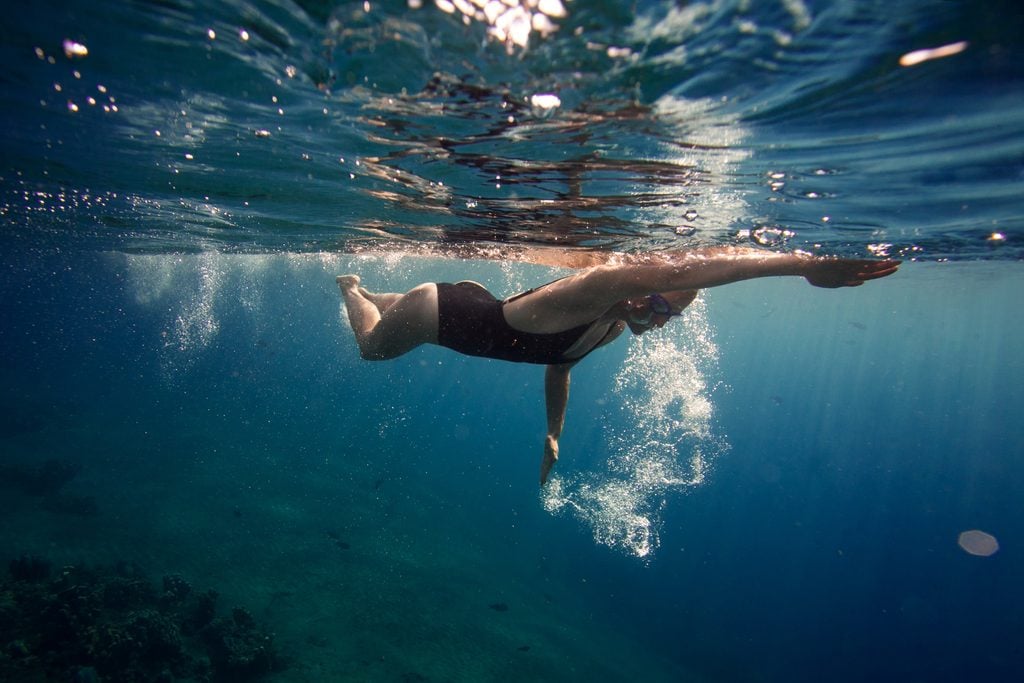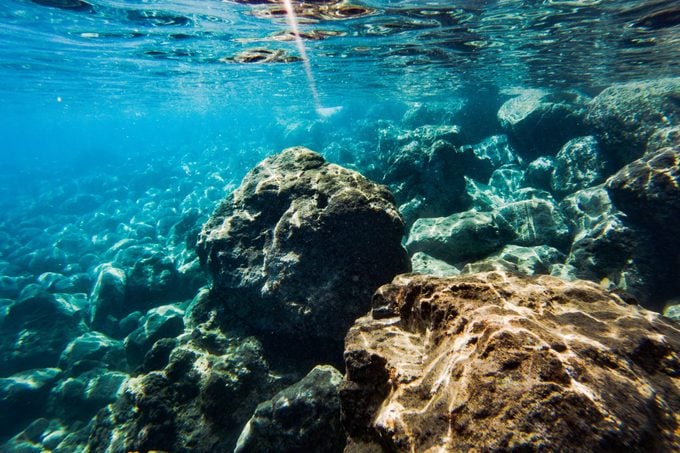6 Things You Need to Know Before Swimming in the Ocean
Updated: Nov. 22, 2022
A trip to the ocean sounds like a perfect addition to your travel itinerary this year, but before you hit the waves there are a few questions you need to know the answers to.
What’s the weather like?
This may seem like an innocuous question, but checking this off your list before heading to the beach can save you from a number of the National Oceanic and Atmospheric Administration’s (NOAA) top concerns for swimmers. The NOAA recommends checking the official surf zone forecast before heading to the beach to ensure that water conditions are safe, as well as checking the incoming weather warnings to make sure there won’t be any storms while you’re swimming. Lightning hitting the water—or anywhere on the beach—is a huge concern for the NOAA and lightning storms make the NOAA’s list of the top 9 dangers at the beach. Tsunamis and thunderstorms are some major concerns, but it’s also important to be prepared to face excessive heat and sun exposure by using plenty of sunscreen and staying hydrated.
What type of wildlife are you dealing with?
Depending on which beach you’re heading to, the answer to that question can be very different. If you’re on your way to Florida or the Gulf of Mexico, you’ll want to be wary of stingrays and practice the stingray shuffle in order to avoid being stung. If you’re in the South Pacific, you’ll want to brush up on your coral reef and sea cucumber knowledge. At the end of the day, you aren’t the only inhabitant at the beach, and doing a bit of research to make sure you know who and what you’ll be sharing the waves with can keep you and your family safe.
How do you survive a rip current?
Know how to survive a rip current, how to spot one, and how to help someone in danger. Rip currents are far more common than people realize, so they aren’t always on the lookout. While rip currents can form in all water types, they are definitely prevalent in the ocean, and you should definitely brush up on your knowledge of them before heading out into the waves.
Where are the lifeguards?
The NOAA recommends only swimming at beaches that are guarded by a lifeguard, and, barring that, reminds swimmers to never, ever swim without anyone else present. Before you dip your toes in the water, be sure to find the nearest lifeguard stands, and be ready to alert them and call for help at any signs of trouble. Of course, the presence of a lifeguard isn’t completely foolproof, which is why lifeguards wish you knew these 46 water safety tips before heading in the ocean, too.
What do all the different flags mean?
If you’ve been to a public beach, you’ve seen the colorful flags. No, they aren’t there for festive color; they’re meant for your safety. But if you don’t know what they mean, how do they help you? Sure, you can probably guess that green means go and red means dangerous, but what about purple? Brush up on your flag knowledge before you go, especially if you’re headed to a foreign country, where the exact flags and signs may be different than you’re used to. Here’s a complete list of beach flags and warning signs for U.S. swimmers.
Can you swim?
Okay, this one seems obvious, but officials at the NOAA advise asking this question before you dive into ocean fun for a reason. Swimming in the ocean, or even the Great Lakes, and the Gulf of Mexico isn’t like swimming in your local pool. The waves are stronger and unpredictable, and wind can cause currents to change at a moment’s notice. You need to make sure you are a strong swimmer before entering any ocean water. You’ll also want to brush up on these 15 beach safety tips before you head into the water.


